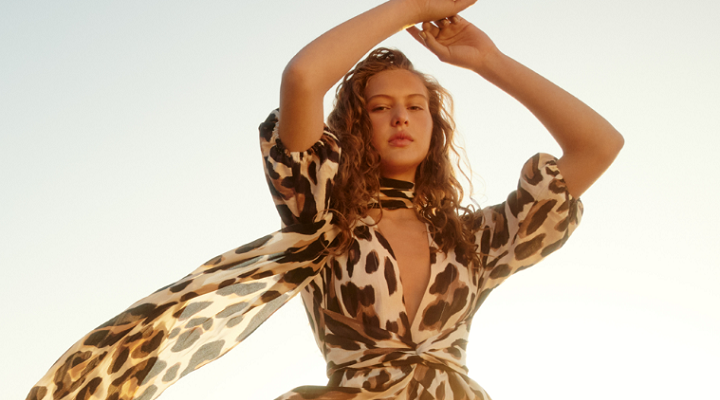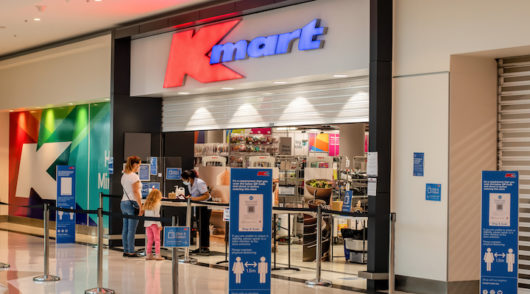Following the success of its collaboration with designer Kym Ellery in March, Australian fashion brand Witchery has teamed up with another acclaimed designer, Kit Willow, to launch a capsule collection of environmentally friendly resort wear just in time for the Australian summer. Available in select stores and online as of 4 November, the collection features naturally derived fabrications, such as hemp, cotton and viscose, as well as buttons made from corozo nuts, which are compostable, a
, and swing tags made from organic polymer, which can be recycled. It is titled ‘Towards a Sustainable Future’.
Willow is well-known in the industry for her passion for sustainable design. As the founder, CEO and creative director of KitX, she has put upcycled garments on runways, and earlier this year, she became one of the first fashion brands in the country to launch a fully integrated resale offering on her e-commerce site.
“That was part of the attraction of working with Kit – to really tap into her knowledge and experience,” Simon Schofield, Witchery’s managing director, told Inside Retail. “We’re at the very beginning of our journey and Kit is so much further along. It was such an honour for our design team to work with her and learn from her.”
For Willow, the decision to collaborate with a mainstream retailer like Witchery was all about reaching a wider audience.
“What interested me in this project was the fact that Witchery has an enormous customer base and a very large reach,” she told Inside Retail. “To be able to create beautiful design-led fashion that is sustainably sourced, and most importantly, share why it’s good, so that customers become more educated about it, was really appealing.”
Hemp and care labels
Willow’s influence can be seen throughout the collection, but most clearly in the use of hemp, a new material for Witchery. While hemp has many environmental benefits – it requires very little water and actually regenerates the soil as it grows – it isn’t widely used in fashion due to outdated perceptions about its appearance and quality.
“I don’t think we would have ever considered it had we not collaborated with Kit,” Schofield said. “It’s a bit of an ugly word, and there are certain connotations around it, but the fabric we’ve ended up with is absolutely beautiful. The store team was blown away.”
Another change Witchery made for the collection was switching from polyester and nylon care labels to undyed cotton.
“Ninety-nine per cent of garments that are created have petrochemical care labels, and they end up in landfill never breaking down, or in rivers,” Willow said. “A lot of the rubbish picked up on beaches is care labels.”
Schofield said that Witchery is looking at permanently changing its care labels to a more sustainable material, and has already booked hemp for next summer.
“We’re going to switch out quite a bit of our linen for hemp, so we’re already starting to think about bringing some of those more sustainable fabrics into our main collections, which is exciting,” he said.
Beyond the sustainability elements, the collection features some of Willow’s signature design details, such as puzzle seams and bias-cut panels, which elevate the garments from the everyday to something more special.
“It was a true collaboration, with Kit coming down to spend time with the design team, and problem-solving when certain samples didn’t come out the way they were envisaged, to make sure the end result was true to Kit’s aesthetic, but of course, commercial for the Witchery customer,” Schofield said.
Coincidentally, it wasn’t Willow’s first time working with Witchery. When she was 22 years old, she was headhunted from the now-defunct Georges department store in Melbourne to be the brand’s marketing manager.
“I was there for a year before I started my label Willow. They didn’t even know about that when they asked me to do the collaboration,” she said.
Customer acquisition tool
Designer collaborations are proving to be an effective customer acquisition tool for Witchery. Shoppers can sign up to get early access to the collections, which Schofield called “a great hook” to get people to join Witchery’s mailing list.
“We have a large database, but it’s always important to keep feeding the top of the funnel,” he said. “Things like collaborations introduce us to a new audience that may not have considered Witchery – often a younger audience who may not have grown up with the brand in quite the same way as some of our loyal customers.”
Beyond the designer collaborations, the retailer is also working on refurbishing its bricks-and-mortar stores to give customers a more enjoyable in-store shopping experience, and it recently extended its sizing from 16 to 20, something that customers had long been asking for.
Founded in South Australia in 1970, Witchery has more than 150 stores in Australia, New Zealand and South Africa, including over 40 concessions in David Jones.







